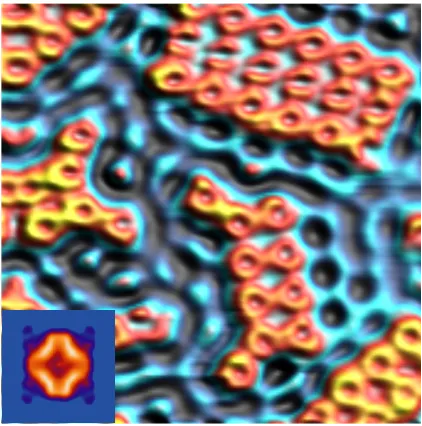Interior of Molecules
Intramolecular and electronic structure of complex molecular species, conformational adaptation & design
The control of large functional molecules on metallic surfaces is of great interest and plays a key role in various fields in science and technology, ranging from heterogeneous catalysis, molecular electronics, optoelectronics based on organic thin films, single molecule contacts. The interaction of complex molecules exhibiting internal degrees of freedom with the substrate frequently induces modifications of the molecular configuration, be it a conformational adaptation or a change in the chemical composition or electronic structure.

Thus it is crucial to get detailed information on the “interior” of molecules adsorbed on surfaces. To this end, we apply a combination of high-resolution STM imaging with image simulations and near-edge X-ray adsorption fine-structure (NEXAFS) measurements. As an example, the above panel summarizes the strong conformational adaptation of a tetra-pyridil porphyrin molecule observed upon adsorption on a Cu(111) surface. In addition scanning tunneling spectroscopy (STS) gives access to the internal electronic structure of adsorbed molecules, as it is demonstrated by the dI/dV map presented below: the redish circular features represent lowest unoccupied molecular orbital (LUMO) of porphyrin.
